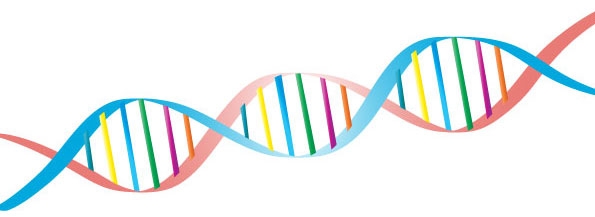Cross-breeding: Breeding for plant resistance to pests and diseases has traditionally focussed on the use of genes from wild-type plants that can naturally combat pathogens.
The wild-type plants often have poor fruit quality, yield or other characteristics and the resistance genes must be transferred to commercial varieties through several generations of breeding.
In cross breeding, the progeny will contain half the genes from the male parent and half the genes from the female parent. Hence in addition to the valuable resistance gene(s) there are thousands of other genes transferred from the wild-type parent.
In fact it has been estimated that in plants and animals there are approximately 20,000 to 50,000 genes. Many of these genes from the wild-type plant are undesirable, so the breeder must then back cross the progeny with the commercial variety to eliminate the undesirable genes from the wild-type parent without losing the plant resistance gene(s).
Resistance genes
A variety with multiple resistance genes is preferable to one containing only a single resistance gene as it is more difficult for the pathogen to overcome multiple resistances.
Resistance genes are also likely to be more effective if they affect the fitness of the pathogen.
For a pathogen to overcome the protectant effects of a plant resistance gene it must alter its genetic makeup (i.e. mutate) so that the resistance gene is no longer affective. But if that plant resistance gene is related to genes within the pathogen that are essential for the pathogens survival (i.e. nutrition genes) then it is unable to overcome that plant resistance without endangering its own survival.
Both multi-gene and targeted resistance genes ensure more durable, longer-term resistance that cannot be easily overcome by the pathogen. This pest management strategy is supported by research to identify the resistance genes and determine their mode of action in the host plant.
Once the resistance genes are identified and characterised, the plant breeder can more effectively transfer these gene(s) into their commercial cultivar for durable resistance.
Molecular markers
Traditionally a plant breeder would grow a plant to maturity and inoculate the plant or fruit with the pathogen to determine if it was resistant or susceptible and thus contained a resistance gene.
However, molecular markers can now be used to more efficiently identify progeny that have the resistance gene(s).
A molecular marker is a segment of DNA located within or near a gene that a breeder wants to transfer to a new variety. By directly identifying if the gene is present in the plant there is no need to undertake the expensive process of growing a tree to maturity and assessing its response to a disease.
There are various methods available to visualise differences in the DNA sequence associated with the molecular marker, and they have been automated to quickly and efficiently screen large numbers of plants.
These methods generally involve increasing the amount of DNA through a process called polymerase chain reaction (PCR), so only a small plant sample is required to detect the presence of a molecular marker.
There has been a lot of research conducted in tree fruits on mapping the location of genes and potential molecular markers and creation of genetic maps. Further work is required to improve the reliability and adoption of molecular marker technology in breeding programs, including development of marker assisted selection (MAS) protocols.
Apple
Molecular markers have been developed for the major pest and diseases of pome fruit of economic significance such as scab, fireblight, powdery mildew and woolly aphid.
Peach
There have also been numerous molecular markers developed for pest and disease resistance in peach such as powdery mildew and plum pox virus. However, like in apple and pear, MAS is yet to be adopted routinely in breeding programs.
This article appears in Tree Fruit March 2013




















